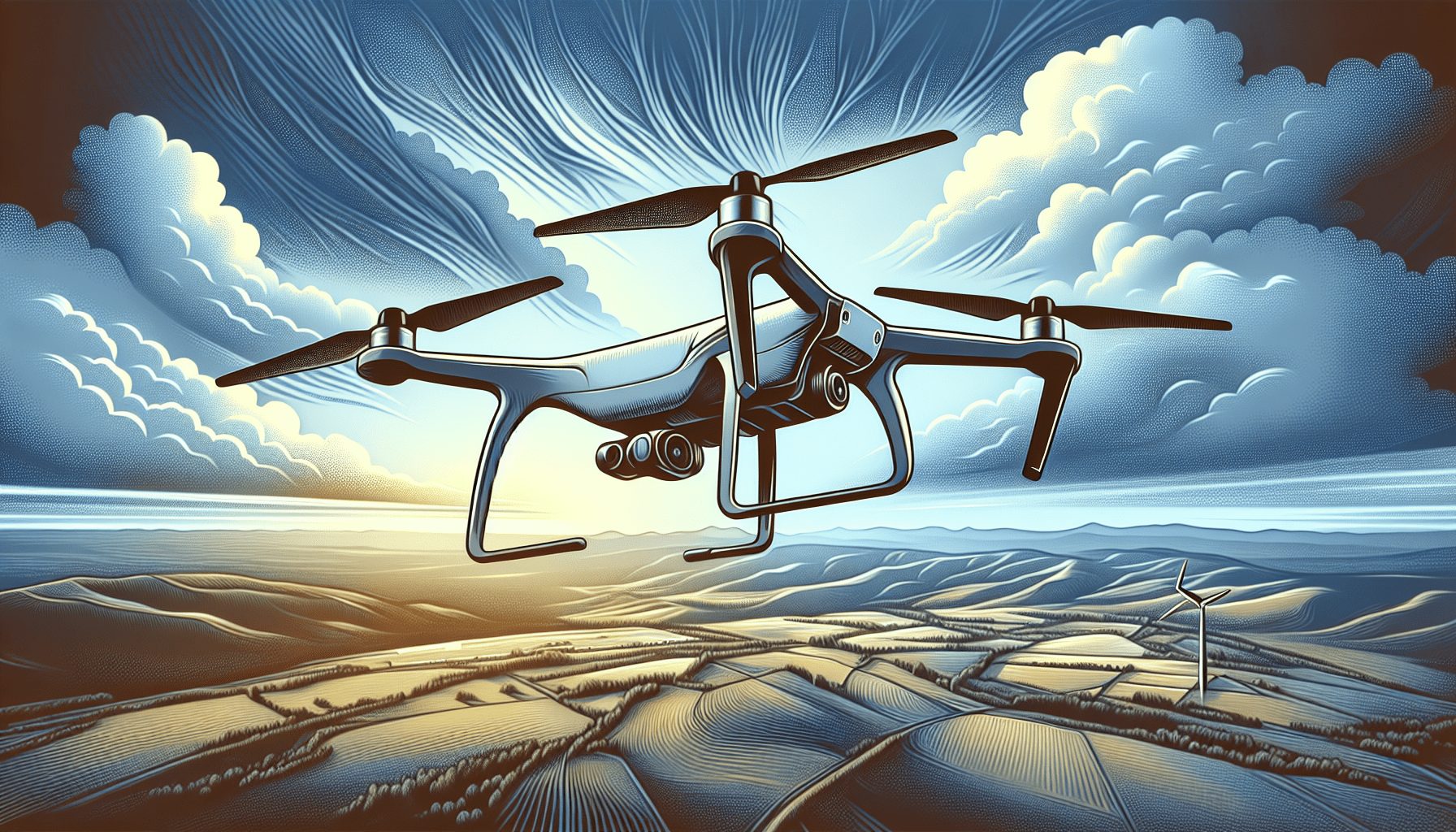Physical Address
304 North Cardinal St.
Dorchester Center, MA 02124
Physical Address
304 North Cardinal St.
Dorchester Center, MA 02124


This post may contain affiliate links. As an Amazon Associate, we may earn commissions from qualifying purchases.
How long can drones fly?
Have you ever found yourself fascinated by drones and wondered just how long they can stay in the air? Understanding drone flight time is crucial, whether you’re an enthusiast flying for fun or a professional using drones for work. This article will walk you through the essential factors that influence drone flight time, different types of drones and their respective capabilities, and practical tips for getting the most out of your drone’s battery life.

Drone flight time can vary significantly depending on a host of factors. Knowing these will help you make informed decisions about your drone usage.
Battery capacity is one of the most straightforward factors affecting flight time. Drones are typically powered by lithium polymer (LiPo) batteries, and their capacity is measured in milliampere-hours (mAh).
Table: Battery Capacity and Flight Time Relationship
| Battery Capacity (mAh) | Flight Time (Minutes) |
|---|---|
| 1,000 – 2,000 | 8 – 12 |
| 2,000 – 3,000 | 12 – 20 |
| 3,000 – 6,000 | 20 – 30 |
The weight of the drone, including cameras and other gear, also plays a significant role. Heavier drones will generally have shorter flight times because the motors need to work harder to keep them airborne.
Weather impacts drone flight time more than you might think. Windy conditions can drastically reduce flight time as the drone’s motors work harder to maintain stability. Similarly, extreme temperatures, both hot and cold, can affect battery efficiency.
Aggressive flying, such as high-speed flights and complicated maneuvers, consumes more power, resulting in shorter flight times. Gentle flying in a straight path generally uses less battery power.
Batteries don’t last forever. Over time, they degrade and lose their ability to hold a charge. Older batteries will therefore provide less flight time compared to new ones.
Different types of drones have varied flight capabilities. Here are some common categories and what you can expect in terms of flight times.
Toy drones are the least expensive and often have shorter flight times. They are great for kids or beginners who want to practice flying.
Typical Flight Time: 5-10 minutes
Hobbyist drones are a step up from toy drones in terms of both quality and price. They usually come with better batteries and more features.
Typical Flight Time: 15-25 minutes
Professional drones are designed for tasks like aerial photography, inspections, and surveying. They offer the longest flight times and the best performance features.
Typical Flight Time: 25-40 minutes
Table: Drone Types and Flight Times
| Drone Type | Typical Flight Time (Minutes) |
|---|---|
| Toy Drones | 5 – 10 |
| Hobbyist Drones | 15 – 25 |
| Professional Drones | 25 – 40 |
Racing drones are built for speed and agility rather than long flight times. Their batteries are optimized for power rather than longevity.
Typical Flight Time: 5-10 minutes
Industrial drones are used for specialized tasks such as delivery, agriculture, or construction. They often have modular battery systems for extended flight times.
Typical Flight Time: 30-60 minutes or more
These drones combine the vertical takeoff capabilities of quadcopters with the long-range flight capabilities of fixed-wing aircraft. They can stay in the air for much longer periods.
Typical Flight Time: 1-4 hours (depending on model)
So, you have a drone and you’re looking to maximize its flight time. Here are some practical tips to help you get the most out of your battery.
Always start with a fully charged, well-maintained battery. Make it a habit to check the condition of your battery before each flight.
Ensure your drone’s sensors and compass are calibrated. This helps in maintaining stability and reduces power consumption.
Keep your drone’s firmware up to date. Manufacturers often release updates that improve battery performance and efficiency.
Avoid aggressive maneuvers and high speeds. Gentle flying will consume less battery power.
Keeping your drone at a moderate altitude can help in reducing power consumption. Flying too high or too low can cause the motors to work harder, draining the battery faster.
Use the “Return to Home” feature efficiently, especially when your battery is running low. This can prevent unexpected drainage and the risk of losing your drone.
Store your batteries in a cool, dry place, ideally at about 50% charge. This prolongs battery life and maintains performance.
Let your battery cool down before recharging. Charging a hot battery can degrade its lifespan and efficiency.
Sometimes, having just one battery is not enough. Here are some additional solutions to consider.
Investing in spare batteries is one of the best solutions for extending your flying time. Always carry a few extras so you can quickly switch them out and continue your flight.
Some drones are compatible with high-capacity batteries. Check with your drone manufacturer to see if you can upgrade to a battery with more mAh.
Some advanced drones come with quick-swap battery systems. These allow you to change batteries without having to power down the drone completely.
Portable power banks and multi-battery charging stations can be lifesavers, especially if you’re out in the field. These allow you to recharge your batteries on the go.

Drone technology is continuously evolving. Here’s a glimpse of what the future holds for drone flight times.
Fuel cells are an emerging technology in the drone industry. They promise longer flight times and quicker refueling compared to traditional batteries.
Solar-powered drones are another exciting development. They can potentially offer extended flight times by harnessing energy from the sun.
Research is ongoing into next-generation batteries like lithium-sulfur and solid-state batteries. These could significantly boost flight times and overall performance.
Drones with autonomous charging capabilities are also in the development phase. They can land on charging pads, recharge themselves, and continue their missions without human intervention.
Understanding how flight times affect different use cases can help you choose the right drone for your needs.
Flight time is crucial for professional photographers and videographers. Longer flight times mean more opportunities to capture that perfect shot.
In agriculture, drones are used for monitoring crops, spraying pesticides, and more. Extended flight times can cover larger fields, making operations more efficient.
For delivery services, flight time directly affects the range and number of deliveries a drone can make. Longer flight times improve efficiency and service quality.
Search and rescue missions and other emergency services rely on drones for quick and efficient operations. Longer flight times can be the difference between life and death in critical situations.
Even for recreational flying, extended flight times mean more fun and less downtime for charging.
Table: Use Cases and Flight Time Requirements
| Use Case | Required Flight Time (Minutes) |
|---|---|
| Aerial Photography | 25 – 40 |
| Agriculture | 30 – 60 |
| Delivery Services | 20 – 60 |
| Emergency Services | 30 – 120 |
| Recreational Flying | 10 – 25 |

So, how long can drones fly? As you’ve seen, the answer depends on various factors, including the type of drone, battery capacity, weight, weather conditions, and flight style. Understanding these elements will help you make the most of your drone’s capabilities, whatever your needs may be.
By taking good care of your batteries, flying smart, and staying informed about the latest technologies, you can extend your drone’s flight times and enjoy longer, more productive flights. Whether you’re a hobbyist or a professional, optimizing flight time is key to getting the most out of your drone experience.